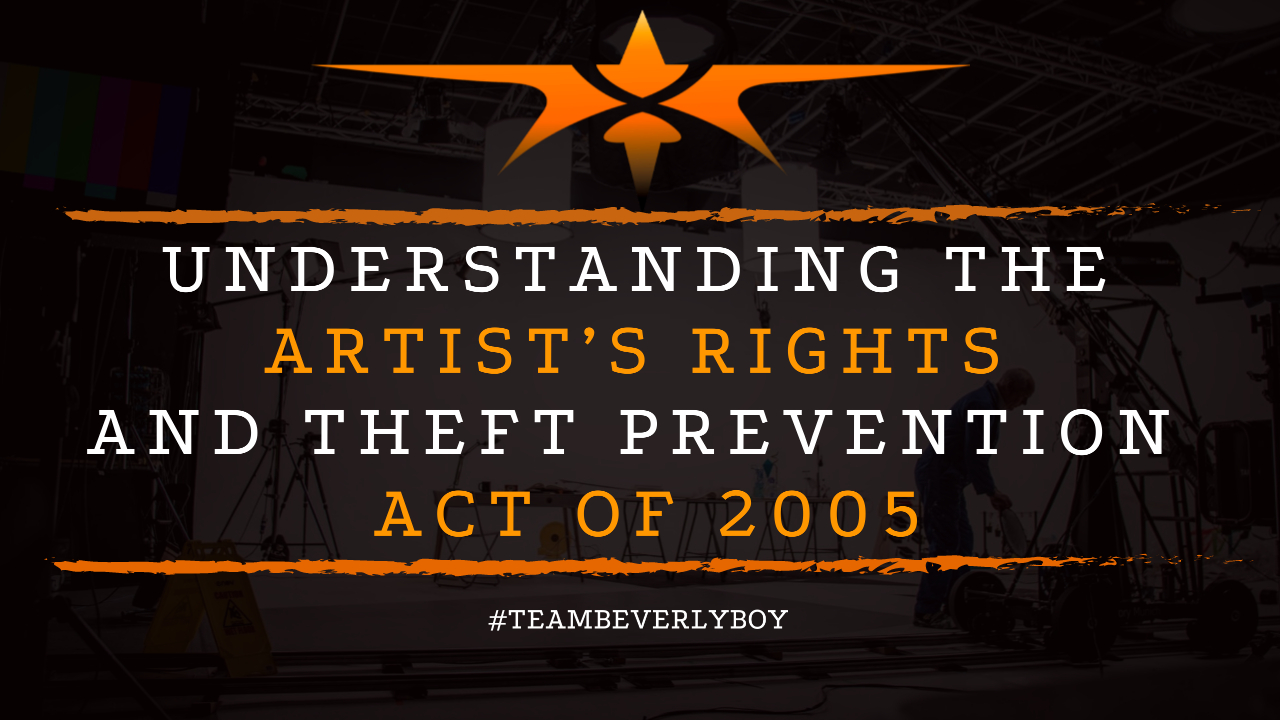
Understanding the Artist’s Rights and Theft Prevention Act of 2005
Over the years, several advancements to the Copyright protections that made many years ago have been introduced. In an effort to keep up with technological advancements which continue to occur each day. The Family Entertainment and Copyright Act, enacted to provide various protections to copyright owners, was presented as two separate parts in 2005. It included the Artist’s Rights and Theft Prevention Act of 2005. As well as the Family Home Movie Act of 2005.

Which together provided specific copyright infringement penalties and “safe harbor” from copyright infringement under very specific circumstances.
What is the Artists’ Rights and Theft Prevention Act of 2005?
The Artists’ Rights and Theft Prevention Act (ART) represents an additional coverage to existing copyright law. Making unauthorized filming or recording inside a movie theater illegal. And adding criminal penalties for those caught in the act.
At the height of file sharing platforms and bootlegging of motion pictures and music. The purpose of this act was to reduce the frequency of unauthorized filming of pre-release commercial works and the subsequent distribution without a license.
Criminal Sanctions
The Artists’ Rights and Theft Prevention Act of 2005 would impose criminal sanctions on those who were charged and convicted of unauthorized recording of a motion picture within a theater.
This legislation resembles the similar 18 U.S.C. Statute 2391A. Which imposed criminal sanctions for unauthorized filming of live concerts.
And would subject those who broke the law to imprisonment of between three and six years. As well as the destruction of bootlegged property. The ART Act further established an additional category of criminal copyright infringement.
In which violators that knowingly make a work that is prepared for commercial distribution available to the public via a computer network. They could be punished by 3 to 10 years in prison as well as fines.
Criminal Sanctions and Intellectual Property Rights
Prior to the 18 U.S.C. Statute 2391A and the Artists’ Rights and Theft Prevention Act of 2005 criminal sanctions under Copyright Law were actually quite rare. Unless in cases where they were in regards to a very large matter.
Most of the time copyright infringement would have the label of a civil matter. With civil sanctions including fines but largely excluding the risk of imprisonment or jail time.
Purpose
Additionally, some believe that the increase in regulations, like the Artists’ Rights and Theft Prevention Act of 2005, was to move toward criminalizing copyright infringement.
Which would have, or has had, a counterproductive impact on the Department of Justice. But these feelings are certainly mixed among society.
However, willful and intentional copyright infringement is a Federal Offense. And those who get themselves into these acts must know that they can be prosecuted.
In Summary
So, what is the Artists’ Rights and Theft Prevention Act or 2005?
It’s legislation which proposes clarifications to existing copyright language. In which the willful filming or recording of copyrighted material at a motion picture theater.
For the purpose of future compensation is illegal and punishable by both imprisonment and fines.



